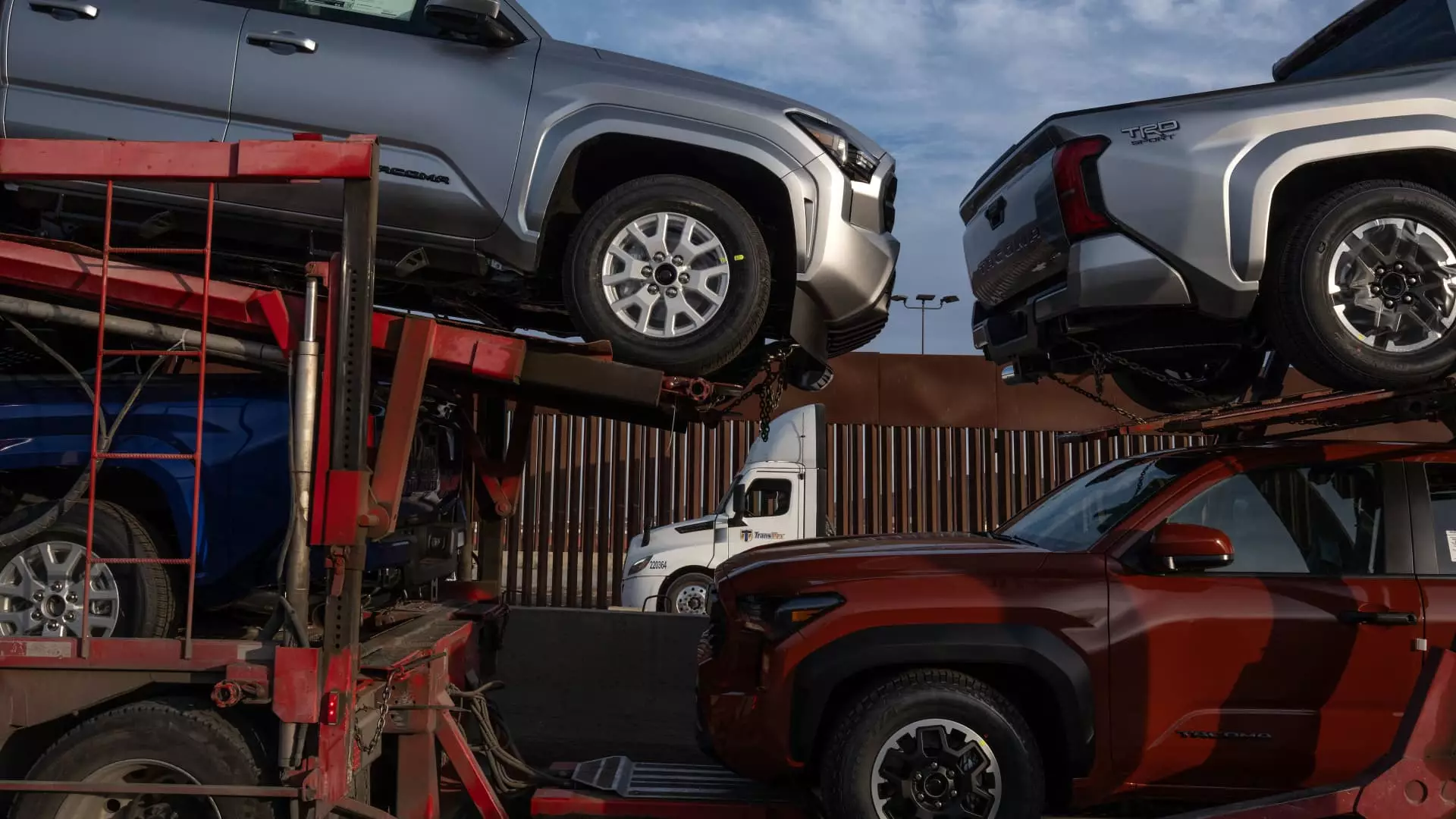As President Donald Trump prepares to impose a potential 25% tariff on imports from Canada and Mexico, the automotive industry stands on the precipice of significant upheaval. The threat is not merely an economic inconvenience; it introduces a level of uncertainty that has already started to affect stock prices and erode investor confidence among automakers such as General Motors (GM), the nation’s leading seller. For months, the industry has adopted a wait-and-see strategy as it attempts to navigate the unpredictable waters of U.S. trade policy. With Trump signaling readiness to act as early as February 1, the stakes have never been higher.
Automakers typically thrive on predictability; this turbulence offers anything but that. Tariffs function as a tax on imported goods, which means that companies will be tasked not only with absorbing these additional costs but also with the daunting possibility of passing them onto consumers. If the latter transpires, vehicles could become significantly more expensive, leading to a decline in consumer demand—a nightmare scenario for a sector already grappling with its own set of challenges.
The Repercussions on Stock Valuations
The effects of this uncertainty are already manifesting within the market. GM recently reported fourth-quarter earnings that exceeded Wall Street expectations, indicating strong operational foundations. Yet, its stock suffered one of its steepest falls in years, underscoring the market’s nervous disposition. Analysts like Dan Levy from Barclays point out that while GM’s long-term prospects might be promising, immediate US policy uncertainties significantly cloud the outlook. GM’s decision not to factor in the tariffs within its forward guidance was described by CFO Paul Jacobson as a cautious yet necessary move, given the prevailing climate of uncertainty.
Jacobson highlighted the disproportionate amount of “noise” in the marketplace due to both political dynamics and environmental crises. Investors, meanwhile, are left wondering about how future trade policies will affect the carmaker’s profitability. The implications of tariffs travel further than suppressing stock prices; they could burden growth initiatives and future plans, particularly crucial for a sector in a state of rapid technological transition.
It is important to grasp the intricate web of automotive production in North America. Major manufacturers have established deep supply chains that stretch across Canada and Mexico, relying heavily on imports for components and materials. Shockingly, nearly all significant automakers operating in the U.S. maintain at least one plant in Mexico and depend on imports to meet American consumer demand. As reported by the International Trade Administration, Mexico imported 49.4% of its auto parts from the United States, while a staggering 86.9% of its auto parts production is exported back to the U.S. Any alteration in tariff structure could wreak havoc on this delicate balance.
Wells Fargo’s estimates underscore the consequential financial burden a 25% tariff would instigate. By their calculations, traditional automakers like GM, Ford, and Stellantis could face billions in additional costs, potentially leading to $56 billion cumulatively for all three carmakers.
Further examination of specific automakers unveils stark contrasts in vulnerability to tariff imposition. Notably, Volkswagen emerges as the most exposed, with approximately 43% of its U.S. sales being produced in Mexico. Other automakers like Nissan and Stellantis follow closely. Meanwhile, firms like Toyota, Honda, and Hyundai, while not as dependent on Mexican production, still face notable risks.
The automotive industry isn’t just experiencing a momentary obstruction; it is potentially on the cusp of a major transformation driven by external political forces. Figures such as Antonio Filosa, Stellantis’ North American operations head, have acknowledged the uncertainty but also highlight the beefed-up contingency plans businesses must implement to mitigate risks.
The Path Ahead: Navigating the Trade Minefield
The looming threatened tariffs pose more than just trade barriers; they symbolize a crucial turning point for the automotive industry. Stakeholders must prepare for a reality where tariffs aren’t just hypothetical but expected, requiring businesses to rethink their strategies so they can navigate potential financial upheaval. As manufacturers brace for what lies ahead, they must combine foresight with agility—a duality that could determine their success in the face of legislative unpredictability.

